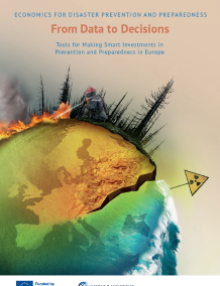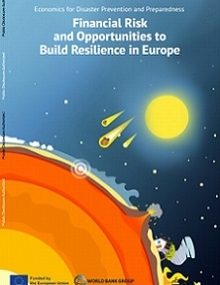Europe is facing overwhelming losses and destruction from climate-related disasters. From 1980 to 2022, weather and climate-related events across the EU caused total losses of about €650 billion, or around €15.5 billion per year. Recent disasters, such as floods in 2022 and wildfires in 2023, have highlighted the vulnerabilities of critical infrastructure, including emergency response buildings such as fire stations, but also roads and power lines.
To guide priority investments in disaster and climate resilience and strengthen financial resilience, the report series Economics for Disaster Prevention and Preparedness—developed by the World Bank and the European Commission—offers evidence and tools to help countries take a more strategic approach to boost their climate resilience. These approaches are also being promoted and operationalized through the ongoing Technical Assistance Financing Facility for Disaster Prevention and Preparedness (TAFF), funded by the European Commission, and implemented by the World Bank and the Global Facility for Disaster Reduction and Recovery (GFDRR).
From Data to Decisions: Tools for making smart investments in prevention and preparedness in Europe
Half of EU Member States have fire stations located in areas with high levels of multiple hazards including wildfires, landslides, floods, or earthquakes. Investing in disaster resilience makes economic sense, and there is an urgency to scale up investments in disaster and climate resilience in a cost-effective and smart manner. This report provides guidance and examples on how to make focused and smart investments to increase the disaster and climate resilience of critical sectors, including those that provide emergency-response services. Risk data, analytical tools, and examples can guide decision-making toward high-priority areas and enable a strategic approach that maximizes benefits of investing in resilience.
Investing in Resilience: Climate adaptation costing in a changing world
The report provides new insights into the costs for a country to adapt to the impacts of climate change, new costing approaches, and best practices with estimated ranges for various sectors and multiple risks. While the estimated cost of climate adaptation varies significantly, in the EU, climate change adaptation costs up to the 2030s are estimated(based on extrapolation from national studies) to be between €15 billion to €64 billion. As Europe grapples with the escalating risks of climate change, the urgency to develop 'adaptation pathways' is paramount. These decision-making approaches enable countries to prepare and act amidst uncertainty, informed by current and future climate risks.
Financially Prepared: The case for pre-positioned finance
Floods, earthquakes, landslides and storms, wildfires and droughts, extreme heat risks create additional pressure on already constrained response and recovery budgets. The size of a potential funding gap due to major earthquakes and floods varies between €13 billion to €50 billion. Should a drought or a wildfire happen in a year where a major earthquake or flood has already occurred, there would be no funding available at the EU level to respond to a wildfire or drought event. Countries in Europe need to enhance their financial resilience through better data utilization and innovative financial instruments, including risk transfer to the private sector.
Related reports





